National Healthcare Quality and Disparities Report
Latest available findings on quality of and access to health care
Data & Analytics
- Data Infographics
- Data Visualizations
- Data Tools
- Data Innovations
- All-Payer Claims Database
- Consumer Assessment of Healthcare Providers and Systems (CAHPS®) Program
- Healthcare Cost and Utilization Project (HCUP)
- Medical Expenditure Panel Survey (MEPS)
- National Healthcare Quality and Disparities Report Data Tools
- Network of Patient Safety Databases
- AHRQ Quality Indicator Tools for Data Analytics
- Surveys on Patient Safety Culture
- United States Health Information Knowledgebase (USHIK)
- Data Sources Available from AHRQ
Data Resources
Filter by Topic
- Access to Care (4)
- Adverse Events (1)
- Ambulatory (2)
- By Payer (2)
- By State (3)
- Children (3)
- Children (1)
- Children/Adolescents (1)
- Clinicians (1)
- Community Pharmacies (1)
- Costs (2)
- Costs & Charges (1)
- Coverage (4)
- Data (3)
- Discharges by State (1)
- Disparities (2)
- Elderly (1)
- Element Definitions, Values & Information Models (1)
- Emergency Departments (4)
- Employer (1)
- Estimates (State & Metro) (1)
- Expenditures & Projections (3)
- Health (5)
- Health Care (8)
- Health Conditions (5)
- Health Plans (3)
- Health Systems (1)
- Hospital Characteristics (2)
- Hospitalizations (10)
- Household Spending (1)
- Injuries Seen (1)
- Inpatient Care (1)
- Insurance (9)
- Medicaid (1)
- Medicare (1)
- Men (1)
- Mental Health (3)
- Mental Health and Substance Abuse Disorders (2)
- Obesity (1)
- Opioids (1)
- Patient Experience (1)
- Payment Sources (1)
- Premiums (1)
- Prescription Drugs (1)
- Preventable (1)
- Private (1)
- Quality (3)
- Readmissions (2)
- Safety Culture (1)
- SCHIP (1)
- Spending (2)
- State (1)
- Surgery (3)
- Systematic Review (1)
- Systems - Characteristics (1)
- Uninsured (2)
- Use (3)
- Visits (2)
- Women (2)
Data Resources
The Agency for Healthcare Research and Quality (AHRQ) offers practical, research-based tools and other resources to help a variety of health care organizations, providers and others make care safer in all health care settings.
Results
41-50 of 53 Resources displayed
MEPSnet is a collection of analytical tools that operate on MEPS data in two categories: MEPSnet/Household Component provides easy access to nationally representative statistics of health care use, expenditures, sources of payment, and insurance coverage for the U.S. civilian noninstitutionalized population. MEPSnet/HC allows you to generate statistics using MEPS Household Component public use files. MEPSnet/Insurance Component provides easy access to national and state level statistics and trends about health insurance offered by private establishments and state and local governments. MEPSnet/IC guides you step-by-step in locating statistics of interest across all available years using data from the MEPS Insurance Component Summary Data Tables.
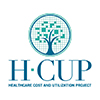
The National (Nationwide) Inpatient Sample (NIS) is the largest all-payer inpatient care database in the United States, containing data on more than seven million hospital stays. Its large sample size is ideal for developing national and regional estimates and enables analyses of rare conditions, uncommon treatments, and special populations.

This report measures trends in effectiveness of care, patient safety, timeliness of care, patient centeredness, and access to care. The report presents, in chart form, the latest available findings on quality of and access to health care.

The NHQDR Data Tools allow users to identify populations experiencing disparities in care and areas for improvement in the delivery of healthcare in the United States, as well as the performance of each state.
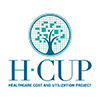
The Nationwide Emergency Department Sample (NEDS) produces national estimates about emergency department (ED) visits across the country. The NEDS describes ED visits, regardless of whether they result in admission. One of the most distinctive features of the NEDS is its large sample size, which allows for analysis across hospital types and the study of relatively uncommon disorders and procedures.
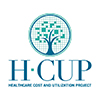
The Nationwide Readmissions Database (NRD) is a unique and powerful database designed to support various types of analyses of national readmission rates for all payers and the uninsured. The NRD includes discharges for patients with and without repeat hospital visits in a year and those who have died in the hospital. Repeat stays may or may not be related. The criteria to determine the relationship between hospital admissions is left to the analyst using the NRD. This database addresses a large gap in health care data - the lack of nationally representative information on hospital readmissions for all ages.
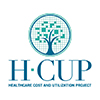
The State Ambulatory Surgery and Services Databases (SASD) are part of the family of databases and software tools developed for the Healthcare Cost and Utilization Project (HCUP). The SASD include encounter-level data for ambulatory surgeries and may also include various types of outpatient services such as observation stays, lithotripsy, radiation therapy, imaging, chemotherapy, and labor and delivery. The specific types of ambulatory surgery and outpatient services included in each SASD vary by State and data year. All SASD include data from hospital-owned ambulatory surgery facilities. In addition, some States include data from nonhospital-owned facilities.
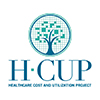
The State Emergency Department Databases (SEDD) are a set of longitudinal State-specific emergency department (ED) databases included in the HCUP family. The SEDD capture discharge information on all emergency department visits that do not result in an admission. Information on patients seen in the emergency room and then admitted to the hospital is included in the State Inpatient Databases (SID).
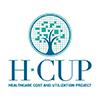
The State Inpatient Databases (SID) are State-specific files that contain all inpatient care records in participating states. Together, the SID encompass more than 95 percent of all U.S. hospital discharges. The uniform format of the SID helps facilitate cross-state comparisons. In addition, the SID are well suited for research that requires complete enumeration of hospitals and discharges within geographic areas or states.

AHRQ established the Surveys on Patient Safety Culture™ (SOPS™) Databases as central repositories for survey data from each of the SOPS surveys. Healthcare organizations that administer one of the AHRQ patient safety culture surveys can voluntarily submit their data to the appropriate database.



